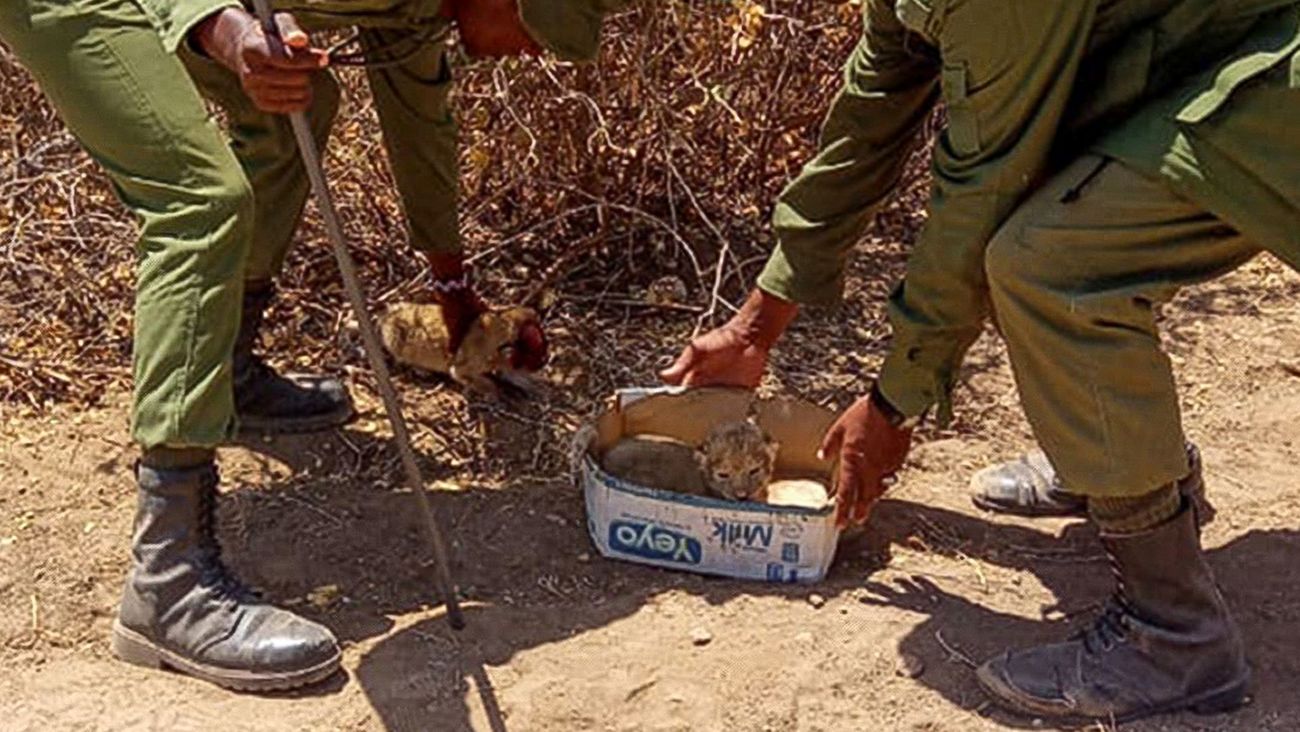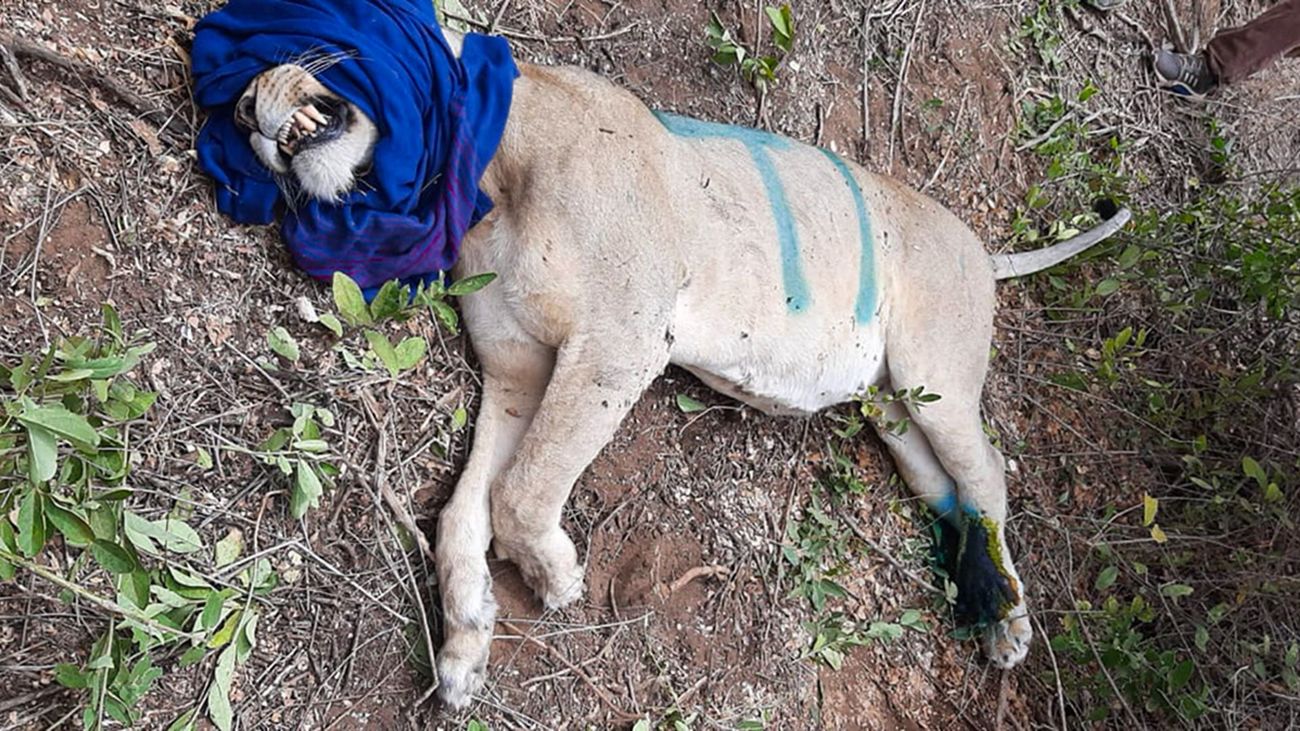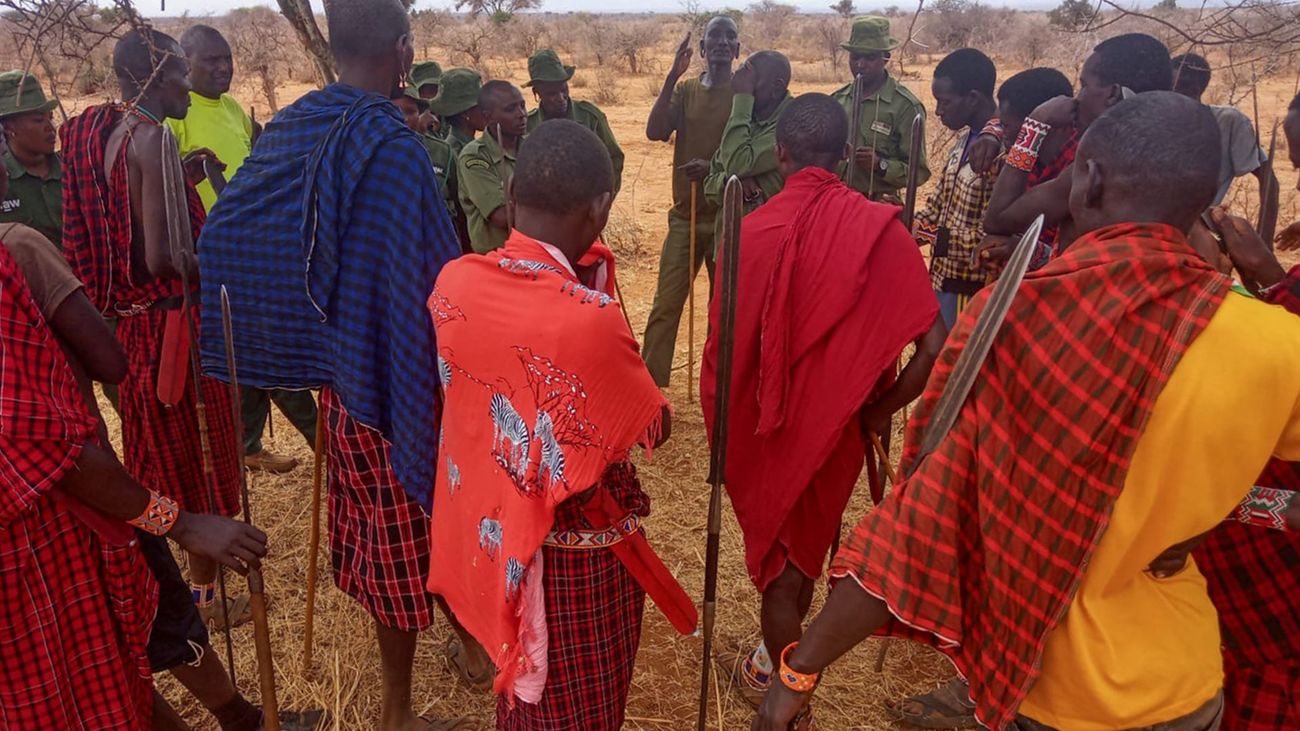Amboseli-Tsavo-Kilimanjaro Landscape
We are giving elephants room to roamNewborn lion cubs’ rescue highlights plight of shrinking predator habitats
Newborn lion cubs’ rescue highlights plight of shrinking predator habitats

Two rangers, Daniel Manga and Saitoti Lengesia, were on a morning foot patrol in Illaingarunyoni Conservancy, Kenya, when they came across two weak and frightened lion cubs lying in some bushes.
The cubs appeared to be about three days old and could barely stand. At this age, they are easy prey for hyenas, leopards, and African wild dogs. Surprised by their find, the rangers were wary that the cubs’ mother may have been on a hunt in the vicinity.
The rangers, who live at the IFAW-supported David Rio Community Ranger Base at Olgulului Community Ranch, inspected the pair and found that one of the cubs had a bloody scar on its face.
While the rangers remained on site to keep a close eye on the cubs, at one point even chasing away a raptor that posed a threat to the pair, another unit was dispatched on a separate search mission to look for the lioness. It takes patience and determination to find these highly elusive big cats in the wild, and locating a specific lioness is even more challenging.
Sifting through thickets of thorny shrubs and hidden dens, the rangers scoured the landscape until sunset. By the next day, the rangers consulted team leader Patrick Sayialel and the Kenya Wildlife Service (KWS) veterinary team, who decided it was time to intervene and rescue the cubs, as they had now been without their mother for more than 30 hours. The vets swiftly moved in, treated the wounded cub, and took the pair to the Nairobi Animal Orphanage, where they are now in safe custody.
After a few days of searching through the landscape, the rangers finally found a lioness a few kilometres away from where the cubs had been left. She was dragging her hind leg, indicating that she had been injured.
It turns out that before giving birth to her litter, this lioness had fallen victim to a spear attack from a herder who was trying to protect his cows. The incident left her with a wounded leg and a scar on her tail, which were treated by the KWS veterinary unit. This type of conflict between people and wildlife is a harsh reality when communities live alongside predators, as is the case in the Amboseli ecosystem.

Lions are victims of drought and climate change
During periods of drought, predators can become desperate when prey disappears from their territories. They often resort to chasing down cattle—sometimes right in front of herders and rangers—which can lead to retaliatory killings.
Classified as vulnerable by the International Union for the Conservation of Nature, lion populations in Africa have been on a steady decline for the past few decades. The Africa continental population currently stands at an estimated 20,000 individuals—a drastic drop from 200,000 lions about a century ago. The African lion faces an ever-expanding list of threats, including human-wildlife conflict, illegal wildlife trade, climate change, and habitat loss resulting from the changing land use and infrastructural development.

IFAW’s community engagement work and ranger support has been crucial to securing habitats for these predators. At the Olgulului Group Ranch, the local community lives adjacent to a landscape that harbours a healthy population of big cats. Having lions as neighbours is never easy especially for communities that rely on livestock for their livelihoods. This is where rangers play a key role to monitor lion movements, alerting herders to safe grazing areas and engaging locals to ensure peaceful co-existence.
Related content
Our work can’t get done without you. Please give what you can to help animals thrive.